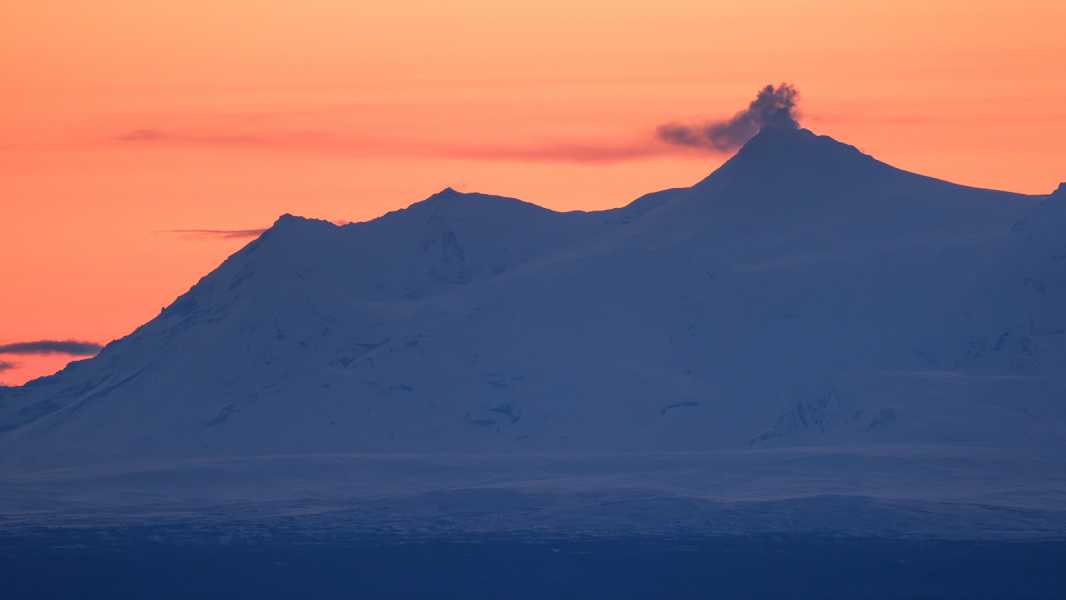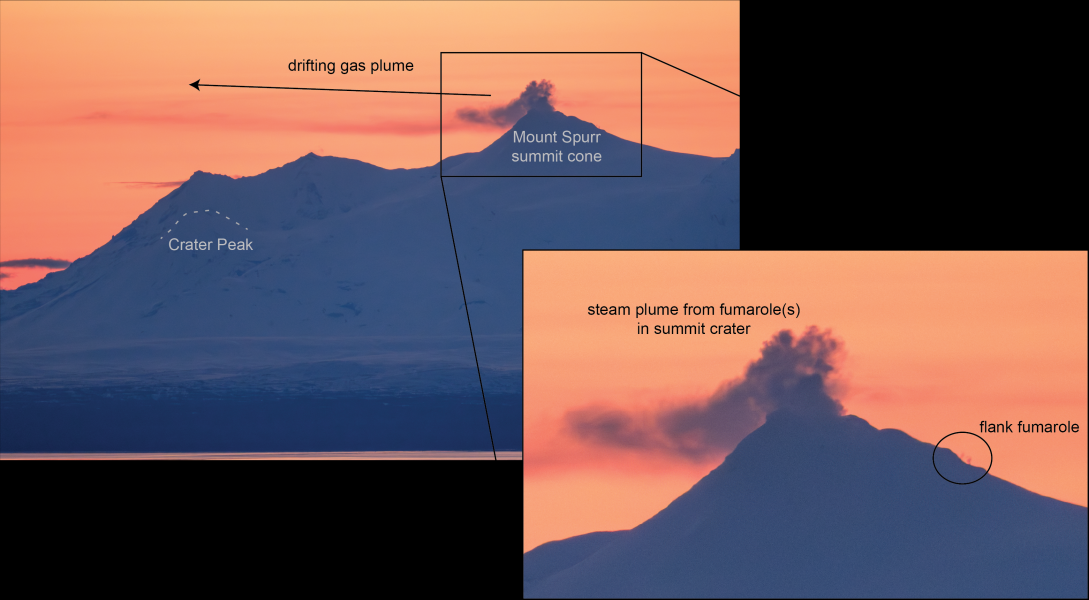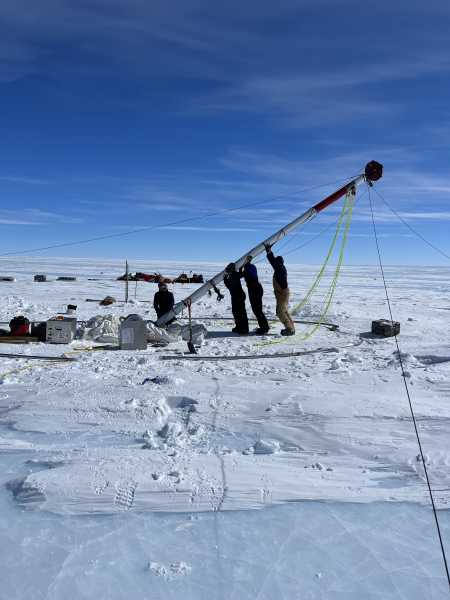
A plume of steam rises from Mount Spurr on March 26. (Photo credit: Loewen, Matt, AVO)
Images show Alaska's Mount Spurr volcano spewing out a huge plume of steam.
In its latest update on March 28, the Alaska Volcano Observatory (AVO) released a photograph of the active volcano taken on March 26, showing steam and gas emitted from both the summit and a vent on the north slope.
“Significant steaming was observed from the summit yesterday, due to favourable atmospheric and visual conditions,” AVO said in an update. “No significant changes in seismic activity or gas emissions were observed that accompanied the steaming.”
The volcano has been showing signs of activity for the past year, with seismic activity increasing significantly in recent months. Scientists currently monitoring it believe the likelihood of an explosive eruption is high.
“The increase in gas emissions confirms that new magma is seeping out from beneath the volcano and indicates that an eruption is likely, although not certain, to occur within the next few weeks or months,” AVO officials said in a March 11 statement.
Mount Spurr, located approximately 80 miles (128 kilometers) west of Anchorage, is the highest volcano in the Aleutian Range, reaching an elevation of 11,070 feet (3,374 meters). The volcano consists of a central summit and a prominent flank vent known as Crater Peak, located 2 miles (3.5 kilometers) south of the summit, which has been the site of most of its historical eruptions, most notably in 1953 and 1992.

Mount Spurr is seen from Glen Alps Lookout in Anchorage, Alaska on March 26, 2025. Steam and gas emissions are visible as a plume above the summit crater, and steam is also seen from a small fumarole on the north flank.
AVO officials said the volcano's alert level could be raised to orange/watch or even red/warning in the coming weeks if further signs of an eruption emerge. “These would include changes in earthquake frequency and pattern, the onset of sustained seismic shaking, further increases in gas emissions, changes in surface deformation, and melting of snow and ice,” officials wrote in a statement after flying over the volcano on March 11.
In the event of an eruption, the greatest dangers are ash clouds, which can interfere with aircraft flights, as well as ash fallout, pyroclastic flows, and lahars – fast-moving destructive mudflows that occur on the slopes.
Sourse: www.livescience.com





